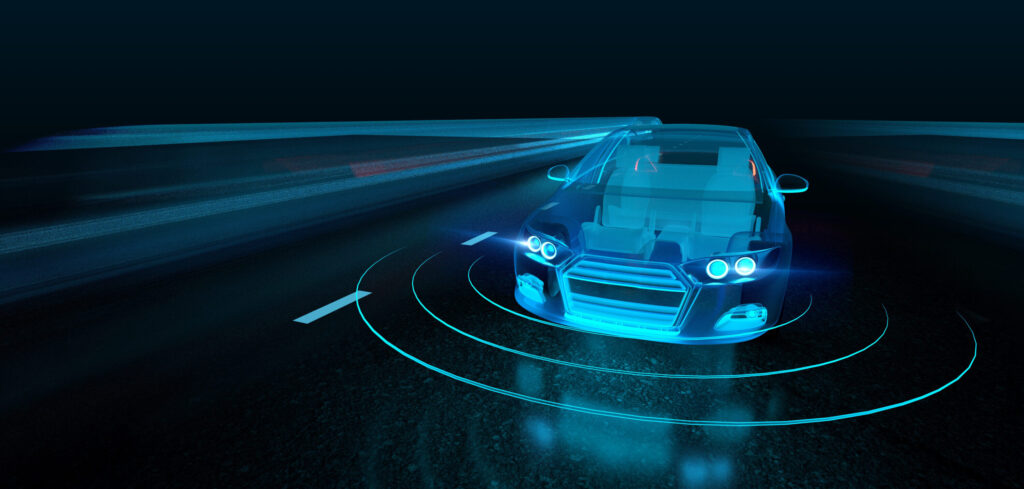This market research report was originally published at the Yole Group’s website. It is reprinted here with the permission of the Yole Group.
Alongside camera and radar, LiDAR sensors are among the key technologies for highly automated, fully automated, and autonomous driving. Together with camera and radar sensors, the LiDAR sensors perceive the surroundings, detect obstacles, measure distances, and thus ensure safety in road traffic.
One key advantage of LiDAR sensor technology is that it provides both real-time image understanding and environmental sensing capabilities. This technology offers a much more comprehensive and detailed image of the entire vehicle environment – during both day and nighttime – and provides essential information for object detection and collision avoidance, even in adverse weather conditions.
TRIOPTICS and Yole Intelligence share today their expertise on the LiDAR market and technology to give a better understanding of LiDAR manufacturing issues. Frederike Norda Dehn, Product Marketing Manager at TRIOPTICS, and Pierrick Boulay, Senior Technology and Market Analyst in the Photonics and Sensing Division at Yole Intelligence, part of Yole Group, offer you a snapshot of this industry and the key manufacturing steps.
Market figures & trends are extracted from the LiDAR for Automotive report, 2023 edition, from Yole Intelligence.
“The LiDAR market is still small compared to the booming camera market, but forecasts show that the production volume for LiDAR systems is starting to grow. By 2023, 600,000 vehicles are expected to be equipped with LiDAR. These LiDAR products come mainly from manufacturers such as Valeo, Innovusion, Hesai, RoboSense, or Huawei, which are already producing LiDAR systems in initial series.”
Pierrick Boulay
Senior Technology and Market Analyst, Yole Intelligence (part of the Yole Group)
Other LiDAR systems, such as those from Luminar or Innoviz, are still in the development phase. But the market is gaining momentum. In 2024, the one million mark is likely to be exceeded by far due to the rapid development in China. By Q3 2023, 36 Chinese OEMs will have launched or will soon launch vehicles with one or more LiDAR systems. The ten-million-unit mark could be reached by the end of the decade. As a result of this rapid development and increase in production volumes, manufacturers are faced with the challenge of developing and implementing new automated production and testing solutions for LiDAR modules. This is where the expertise of TRIOPTICS, the specialist in optical metrology, comes in.

TRIOPTICS’ equipment achieves maximum output and production speed, enabling the production of over one million sensors per year. This means a fully automated production line with pre-testing of the components, a sensor-specific alignment process of the optical elements, and end-of-line (EOL) testing of the final product. The entire system meets the requirements of the automotive industry for the highest OEE (Overall Equipment Effectiveness) in terms of 24/7 production with maximum availability, as well as traceability of production data and connectivity to the MES (Manufacturing Execution System).
“These advantages recently convinced a leading global automotive supplier of driver assistance systems to commission a lighthouse project at TRIOPTICS: The construction of an automated line for the production of solid-state LiDAR modules that work according to the time-of-flight principle.”
Frederike Norda Dehn
Product Marketing Manager, TRIOPTICS
At the project’s beginning, the customer brought a developed prototype and a manual laboratory set-up to produce the LiDAR system. The prototyping process now needed to be transferred to automated series production with the highest precision and production speed with the help of TRIOPTICS.

LiDAR module: optical alignment of optic and sensor – Courtesy of TRIOPTICS, 2023
The production line – which was then developed based on the specifications – includes numerous innovative processes and stations:
- Loading with trays: emitter & receiver PCB (Printed Circuit Board) with housing, as well as objective lenses,
- Barcode scanning for traceability,
- Plasma cleaning,
- Glue dispensing,
- Optical alignment,
- UV curing of the glue,
- Oven curing.

Alignment station for automotive LiDAR sensors – Courtesy of TRIOPTICS, 2023
In addition to the assembly processes, the production system also covers necessary end-of-line tests that check the performance and quality of the manufactured LiDAR components:
- Testing of the lens position,
- Simulation of an object distance at 100 meters to check the accuracy of the beam path from emitter to receiver,
- Lens positioning test to the emitter and receiver chip respectively,
- Walk error check by means of a test chart showing three different levels of reflectivity.
The result is a perfectly aligned sensor that is manufactured and fully tested in a small space – ready for use in state-of-the-art automotive vehicles. Conclusion: Whether it concerns R&D, prototyping, production, or the ramp-up phase, an intelligent alignment process with uniform, defined, and traceable parameters enables TRIOPTICS to accompany its customers from the laboratory to mass production. TRIOPTICS offers perfectly coordinated equipment for every phase. From phase to phase, the alignment process established at the beginning can continue to be used for production, saving both time and money.
Yole Group invites you to follow the evolution of the LiDAR industry throughout the year with dedicated analyses, articles, and interviews with industrials, as well as events and product launches.
Yole Group’s analysts are very glad to meet industrials, establish new contacts, and help drive their LiDAR business forward. Come and meet the analysts and look through the latest market, technology, reverse engineering and reverse costing analyses. Send us your request for a meeting during key tradeshows and conferences at [email protected].
Stay tuned on yolegroup.com.


